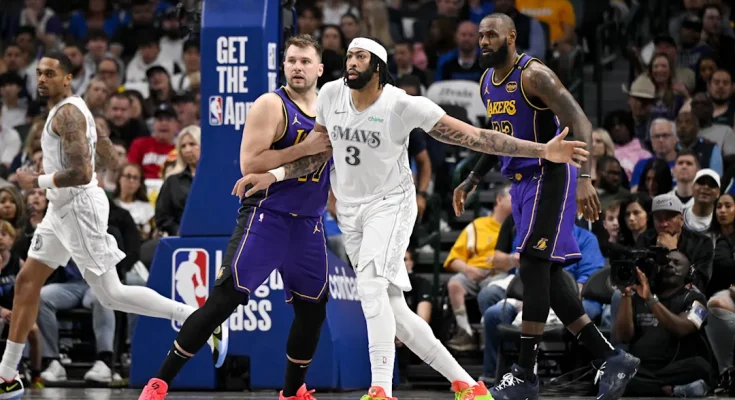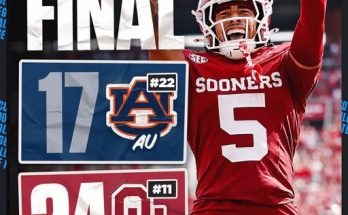The surprising recent trade that sent Anthony Davis to the Dallas Mavericks in exchange for Luka Doncic, Max Christie, and draft compensation was a seismic shift in the NBA landscape, but as the dust settles and the financial particulars of the deal become clearer, a new and intriguing storyline has emerged. While the Mavericks have acquired a generational talent in Luka Doncic to build their future around, it’s the Los Angeles Lakers who, in a fascinating bit of roster management, will be paying their former star center, Anthony Davis, approximately $25 million more over the next three seasons than they will be paying their newly acquired franchise centerpiece, Doncic. This seemingly counterintuitive financial arrangement speaks volumes about the complex nature of the NBA’s collective bargaining agreement, the timing of player contracts, and the strategic decisions that front offices must make to navigate the league’s salary cap. It’s a situation that has prompted much discussion and analysis, as it highlights how a team can “lose” a star player in a trade but still be on the hook for a significant portion of his salary, and how a team can acquire a new superstar on a contract that, for a period, is less costly than the player they gave up.
Anthony Davis’s contract with the Lakers was a significant one, a three-year extension worth $186 million that he signed with the franchise in August 2023. This deal was a clear commitment from the Lakers to Davis as a core piece of their future, a cornerstone alongside LeBron James, with the assumption that he would eventually take the reins as the team’s undisputed leader. The contract was a maximum deal, a testament to Davis’s value as a two-way force in the league and a recognition of his elite status. It guaranteed him a substantial salary for the upcoming seasons, with a player option in the final year. The logic at the time was sound; locking up an All-NBA caliber big man who had been a key part of a championship team was a priority for a franchise focused on sustained success. His salary was set to be one of the highest in the league, reflecting his standing among the NBA’s elite.
Then came the blockbuster trade. In a move that shocked the basketball world, the Lakers sent Davis to the Mavericks for Luka Doncic. While the on-court implications were immediately debated, the financial ramifications were equally fascinating. The Lakers, in acquiring Doncic, were getting a player who was still on his rookie-scale extension, a deal he had signed with the Mavericks years ago. This contract, while a max deal for his experience level, was significantly less than the max extension Davis had just signed. Doncic’s deal, which he has now extended with the Lakers for three years and $165 million, is still a massive payday, but the timing and structure of it, combined with the new extension, create a temporary salary disparity. Doncic’s salary over the next three seasons will total less than what Davis is owed over the same period. The $25 million difference is not a small sum, and it’s a direct consequence of the timing of the contracts and the mechanics of the salary cap. The Lakers, in effect, are paying the price of a previous commitment while benefiting from the relatively more team-friendly contract of their new superstar.
The Mavericks, on the other hand, inherit Anthony Davis’s massive contract. They are now responsible for the remainder of his three-year, $186 million extension. This is a significant financial commitment, but from their perspective, it was the cost of acquiring a player they believe can be a dominant force and a key component of a championship-contending team. The Mavericks’ front office, which has faced criticism in the past, made a bold move to acquire a player they see as a culture-resetting force, a two-way big man who can anchor their defense and provide a reliable offensive presence. The financial commitment to Davis is a clear signal of their intentions and their belief in his ability to deliver on the court. The fact that they are now paying him more than the Lakers are paying Doncic is a detail, but it’s a detail that underscores the value they placed on acquiring him.
The situation also shines a light on the strategic thinking of the Lakers’ front office, specifically General Manager Rob Pelinka. While the trade itself was a monumental gamble, the financial aspect of it is a testament to savvy cap management. By acquiring Doncic on his existing contract and then extending him on a deal that, for the next three years, is less than what they were already on the hook for with Davis, the Lakers have created a bit of a financial cushion. This could be crucial for a team looking to build a new roster around their new star. The extra salary cap flexibility, however small, can be used to acquire complementary players, sign free agents, or make further trades. It allows the Lakers to be more aggressive in their pursuit of talent to surround Doncic and create a legitimate championship contender in the post-LeBron era. The decision to trade Davis and his larger contract for Doncic’s more team-friendly deal, even with the extension, appears to be a calculated move with both on-court and financial benefits. It’s a move that positions the Lakers for both immediate success and long-term stability, a rare feat for a franchise that often operates with a win-now mentality.
This entire scenario is a perfect example of how the NBA’s salary cap and contract rules influence team building. It’s not always about who is the better player in a vacuum; it’s about a player’s age, their contract status, and how their salary fits into the overall financial picture of the team. In this case, the Lakers have made a difficult decision that seems to have paid off financially, even if it meant moving on from a player they had just committed a massive amount of money to. The trade has not only shifted the balance of power on the court but has also created a fascinating financial juxtaposition that will be analyzed for years to come. The idea that a team could pay a player on an opposing team more than their new franchise player is an anomaly, a quirk of the system that showcases the importance of timing and foresight in the modern NBA.
Ultimately, the fact that Anthony Davis is getting paid $25 million more than Luka Doncic over the next three years is a footnote to a much larger story. It is a detail that illustrates the complex and often unforgiving world of professional sports economics. For the Mavericks, it’s the cost of doing business to acquire a player they believe can change their fortunes. For the Lakers, it’s a clever bit of financial maneuvering that has positioned them for a bright future with their new franchise player. The dollars and cents of the deal are a constant reminder that in the NBA, as in all of professional sports, success is not just measured by what happens on the court, but also by how a team manages its assets, its contracts, and its long-term vision. This trade, and the financial reality it has created, will be a case study for future front offices as they navigate the ever-evolving landscape of the league. The Lakers’ decision to prioritize a younger, arguably more impactful superstar, even at the temporary cost of paying their former star more, is a clear signal of their new direction and a testament to the bold, sometimes ruthless, decisions required to build a dynasty in the modern NBA.



